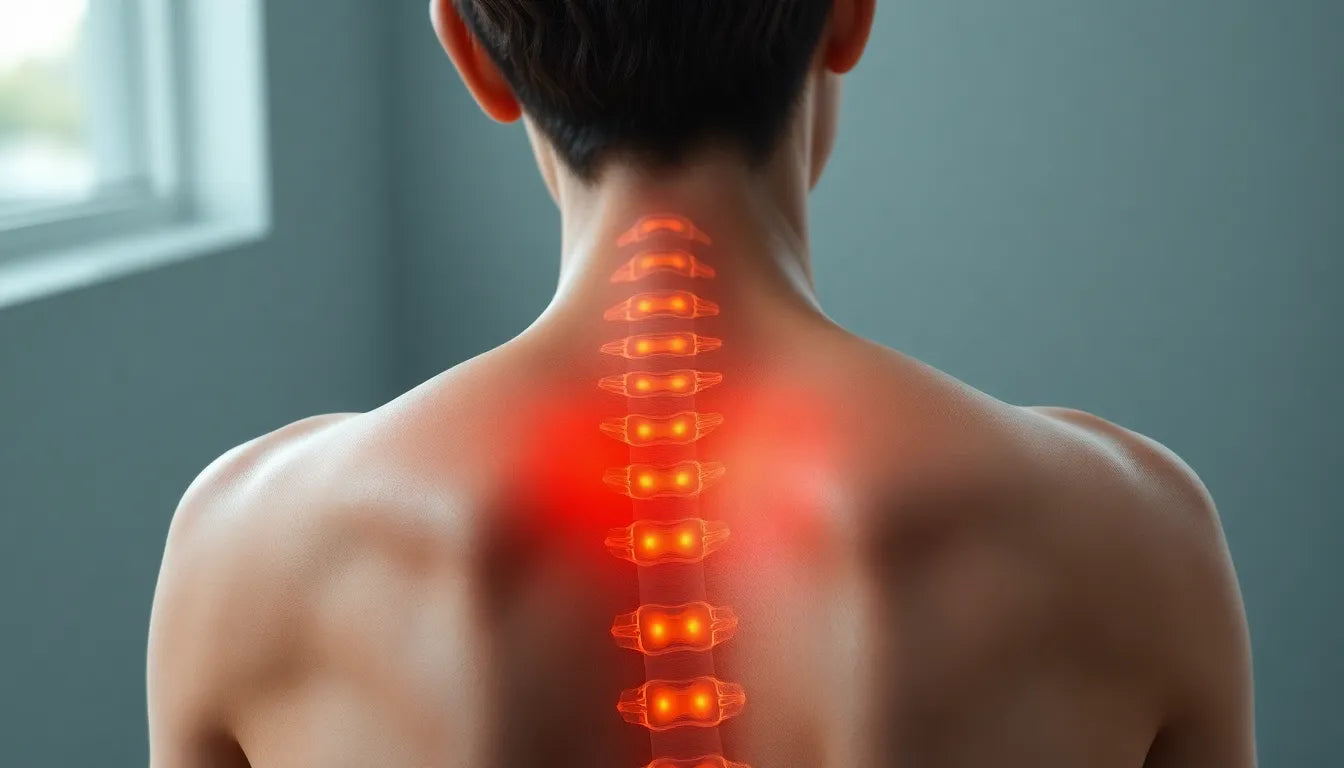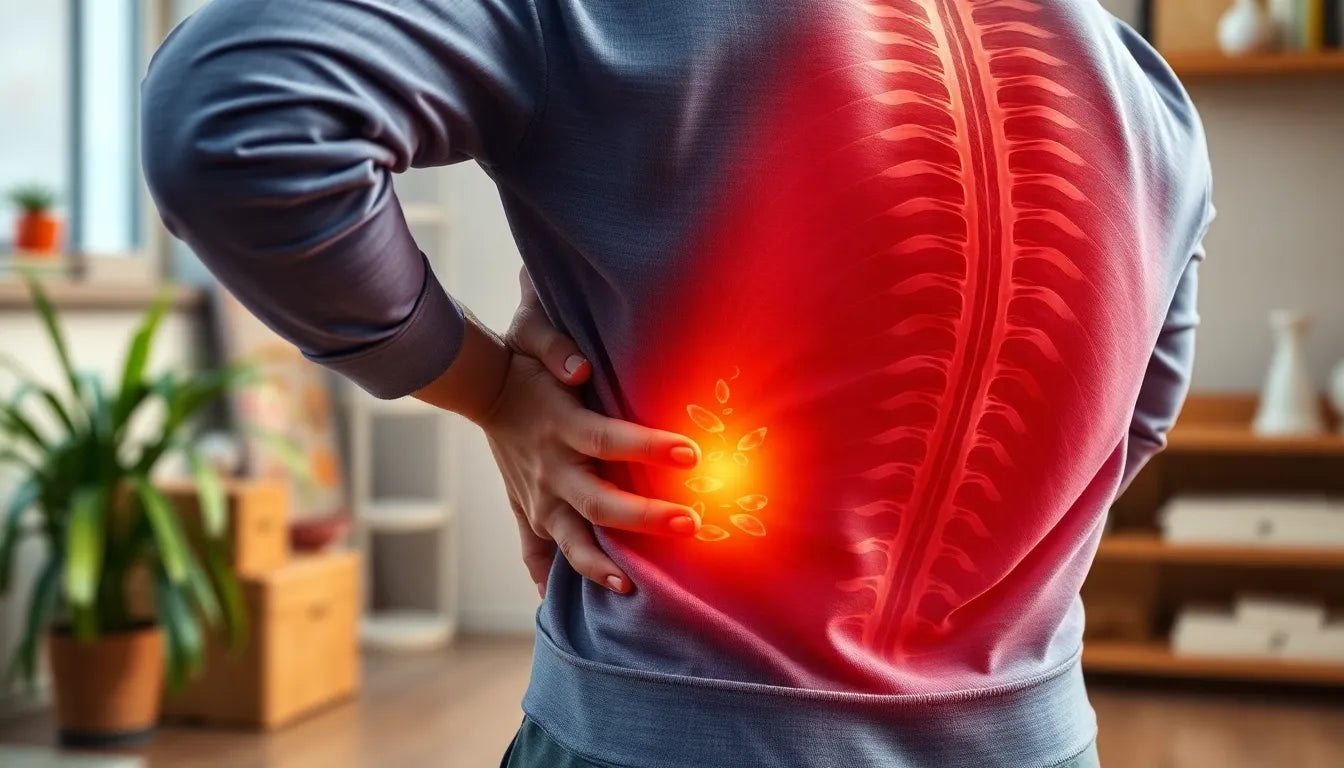Calf pain, or "ondt i læggen," is a common issue that can affect anyone, from avid athletes to those leading a more sedentary lifestyle. This discomfort, often felt as a sharp or dull ache in the calf muscles, can significantly impact daily activities and overall quality of life. Whether you're running a marathon or simply trying to enjoy a leisurely walk, calf pain can be a persistent and frustrating obstacle.
understanding the main causes of calf pain
To effectively address and alleviate calf pain, it's crucial to understand its main causes. Overuse and muscle overload are among the most common culprits, especially for individuals who engage in intense physical training or repetitive leg movements. This can lead to muscle fatigue and soreness, making even simple movements painful.
Another major cause of calf pain is electrolyte imbalance. Electrolytes like sodium, potassium, and magnesium play a vital role in muscle function. When these minerals are out of balance, it can result in painful cramps and spasms in the calf muscles. Poor circulation is also a significant factor, as inadequate blood flow can cause lactic acid to build up, leading to discomfort and pain.
Biomechanical factors, such as improper foot alignment, can place additional stress on the calf muscles. For instance, overpronation, where the foot rolls inward excessively, can lead to increased strain and pain in the calves. Additionally, injuries like strains or more serious conditions such as blood clots can cause acute pain and require immediate medical attention.
the importance of addressing calf pain
Understanding and addressing the root causes of calf pain is essential for both immediate relief and long-term prevention. By identifying the underlying issues, individuals can implement effective solutions that not only alleviate current discomfort but also prevent future occurrences. This blog post will delve deeper into the causes, symptoms, and effective strategies for managing calf pain, providing readers with the knowledge needed to tackle this common issue head-on.
Whether you're dealing with overuse, electrolyte imbalances, or circulation issues, recognizing the signs and taking proactive steps can make a significant difference. Stay tuned as we explore these topics in greater detail, offering practical advice and solutions to help you find relief and regain your mobility and comfort.
exploring the causes of ondt i læggen in detail
Understanding the intricacies of calf pain, or "ondt i læggen," requires a deeper look into its various causes. One of the primary reasons is overuse and muscle overload. This typically occurs when individuals engage in strenuous training or repetitive leg activities without adequate rest. Such activities can lead to muscle fatigue, resulting in pain and discomfort that can hinder mobility and daily functioning.
Another significant factor contributing to calf pain is electrolyte imbalance. Electrolytes like sodium, potassium, and magnesium are crucial for muscle contraction and relaxation. An imbalance, often caused by excessive sweating or inadequate dietary intake, can lead to muscle cramps and spasms in the calves. This is particularly common among athletes and individuals who perform high-intensity workouts without proper hydration and nutrition.
Poor circulation is also a key player in the onset of calf pain. When blood flow is restricted, it can lead to an accumulation of lactic acid and other waste products in the muscles, causing pain and discomfort. This is often seen in individuals who sit or stand for prolonged periods without adequate movement, leading to poor venous return and increased pressure in the lower limbs.
Biomechanical factors, such as improper foot alignment, can further exacerbate calf pain. Conditions like overpronation, where the foot rolls inward excessively when walking or running, can place undue stress on the calf muscles. This misalignment can cause the muscles to work harder to stabilize the body, leading to fatigue and pain over time.
Injuries and medical conditions also play a crucial role in calf pain. Muscle strains, Achilles tendonitis, and stress fractures are common sports-related injuries that can cause significant pain in the calves. Additionally, more severe conditions such as deep vein thrombosis (DVT), characterized by swelling, redness, and warmth in the calf, require immediate medical attention to prevent serious complications.
recognizing symptoms of calf pain
Identifying the symptoms of calf pain is essential for timely intervention and treatment. Common symptoms include soreness, stiffness, and cramps, often occurring after physical activity or during the night. These symptoms can vary in intensity, from mild discomfort to severe pain that limits movement.
It's important to be aware of symptoms that may indicate more serious underlying issues. Swelling, redness, and warmth in the calf can be signs of a blood clot, requiring urgent medical evaluation. Similarly, intense pain that doesn't improve with rest or home remedies should be assessed by a healthcare professional to rule out injuries or other medical conditions.
addressing calf pain effectively
Addressing calf pain involves a combination of immediate relief strategies and long-term preventive measures. For quick relief, applying ice packs to the affected area and elevating the legs can help reduce swelling and alleviate discomfort. These methods are particularly effective in managing acute pain following physical activity or injury.
For long-term management, ergonomic supports such as insoles, heel pads, and supportive footwear can help correct biomechanical issues and prevent future pain. Incorporating stretching and strengthening exercises into your routine can also improve flexibility and muscle resilience, reducing the risk of overuse injuries.

37 exercises collected in the ultimate exercise book
A physiotherapist-approved e-book with effective exercises for injury prevention, rehabilitation, and mobility.
Nutritional adjustments play a vital role in maintaining electrolyte balance, especially for those engaging in intense physical activities or living in hot climates. A diet rich in essential minerals like potassium and magnesium can help prevent cramps and support overall muscle function.
By understanding the causes and symptoms of calf pain, individuals can take proactive steps to manage and prevent this common issue. Whether through lifestyle changes, ergonomic solutions, or medical intervention, addressing calf pain effectively can enhance mobility, comfort, and quality of life.
effective relief and prevention strategies for ondt i læggen
When dealing with calf pain, or "ondt i læggen," it's essential to employ both immediate and long-term strategies for relief and prevention. For immediate relief, applying ice packs to the affected area can help reduce inflammation and numb the pain. Elevating the legs above heart level is another effective method to decrease swelling and promote better circulation, providing quick comfort.
For long-term solutions, ergonomic supports such as custom insoles, heel pads, and supportive footwear are invaluable. These products can correct biomechanical misalignments, such as overpronation, which often contribute to calf pain. By providing the necessary support, these ergonomic aids can prevent undue stress on the calf muscles during daily activities.
Incorporating regular stretching and strengthening exercises into your routine is crucial for maintaining flexibility and muscle strength. Exercises like calf raises, toe stretches, and seated calf stretches can enhance muscle resilience, reducing the risk of overuse injuries. These exercises should be performed consistently to achieve the best results.
Nutritionally, maintaining a balanced diet rich in essential electrolytes like potassium, magnesium, and sodium is vital. These minerals support muscle function and help prevent cramps. For those engaging in intense physical activities or living in hot climates, ensuring adequate hydration and electrolyte intake is particularly important.
prevention tips to avoid calf pain
Preventing calf pain involves a combination of lifestyle adjustments and mindful practices. Gradually increasing the intensity and duration of physical activities can help prevent muscle overload. This gradual progression allows the muscles to adapt and strengthen over time, minimizing the risk of injury.
A thorough warm-up and cooldown routine is essential before and after any physical activity. This practice helps prepare the muscles for exertion and aids in recovery, reducing the likelihood of soreness and stiffness. Additionally, wearing appropriate footwear that provides adequate support and cushioning is crucial for maintaining proper foot alignment and preventing calf strain.
Ensuring sufficient hydration and mineral intake is another key preventive measure. Drinking enough water and consuming foods rich in electrolytes can help maintain muscle function and prevent cramps, especially during strenuous activities or in hot weather conditions.
frequently asked questions
What are the most common causes of calf pain?
Common causes of calf pain include overuse, electrolyte imbalance, poor circulation, biomechanical issues, and injuries.
How can I quickly relieve calf pain?
For quick relief, use ice packs, elevate your legs, and consider ergonomic supports like insoles and heel pads.
When should I see a doctor for calf pain?
If you experience severe pain, swelling, redness, or warmth, it's important to seek medical attention immediately.
Can lifestyle changes prevent calf pain?
Yes, incorporating proper footwear, balanced nutrition, and gradual exercise routines can significantly help in preventing calf pain.
By understanding the causes and symptoms of calf pain, individuals can take proactive steps to manage and prevent this common issue. Whether through lifestyle changes, ergonomic solutions, or medical intervention, addressing calf pain effectively can enhance mobility, comfort, and quality of life.

Posture Brace - Comfort+
Provides extra comfortable upper body support and helps improve posture throughout everyday activities.
Kilder
- Angelica Massage. "Behandling af ømme lægge."
- Din Flexible Sundhed. "Øvelser for lægsmerter."
- Sundhed.dk. "Lægsmerter."
- Sundhed.dk. "Læg senebetændelse akut."
- Venecenter. "Ondt i læggen - symptom på åreknuder."
- Region Sjælland. "Åreforkalkning - gangsmerter i benene."
- Fitnessfree. "Ondt i læggen når du går."
- Helsam. "En øm lægmuskel."
- Sportnetdoc. "Muskelbristning - Blødning i læg."























